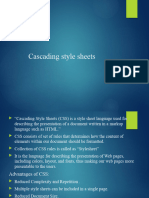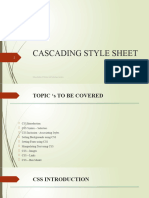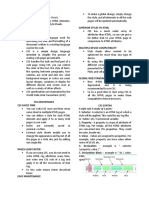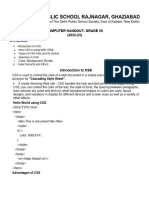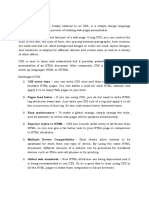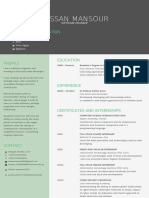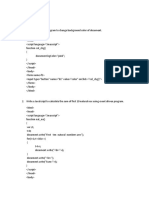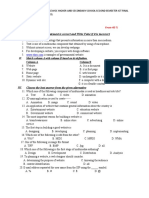0% found this document useful (0 votes)
9 views11 pagesCC Assignement
The document provides a comprehensive explanation of CSS, covering its rules, elements, syntax, and various types of selectors. It also discusses methods for adding CSS to HTML, including inline, internal, and external styles, as well as CSS comments, pseudo-classes, pseudo-elements, and key concepts like the box model and responsive design. The information is structured to serve as a detailed guide for understanding and utilizing CSS in web development.
Uploaded by
muudyjumbeCopyright
© © All Rights Reserved
We take content rights seriously. If you suspect this is your content, claim it here.
Available Formats
Download as DOCX, PDF, TXT or read online on Scribd
0% found this document useful (0 votes)
9 views11 pagesCC Assignement
The document provides a comprehensive explanation of CSS, covering its rules, elements, syntax, and various types of selectors. It also discusses methods for adding CSS to HTML, including inline, internal, and external styles, as well as CSS comments, pseudo-classes, pseudo-elements, and key concepts like the box model and responsive design. The information is structured to serve as a detailed guide for understanding and utilizing CSS in web development.
Uploaded by
muudyjumbeCopyright
© © All Rights Reserved
We take content rights seriously. If you suspect this is your content, claim it here.
Available Formats
Download as DOCX, PDF, TXT or read online on Scribd
/ 11











